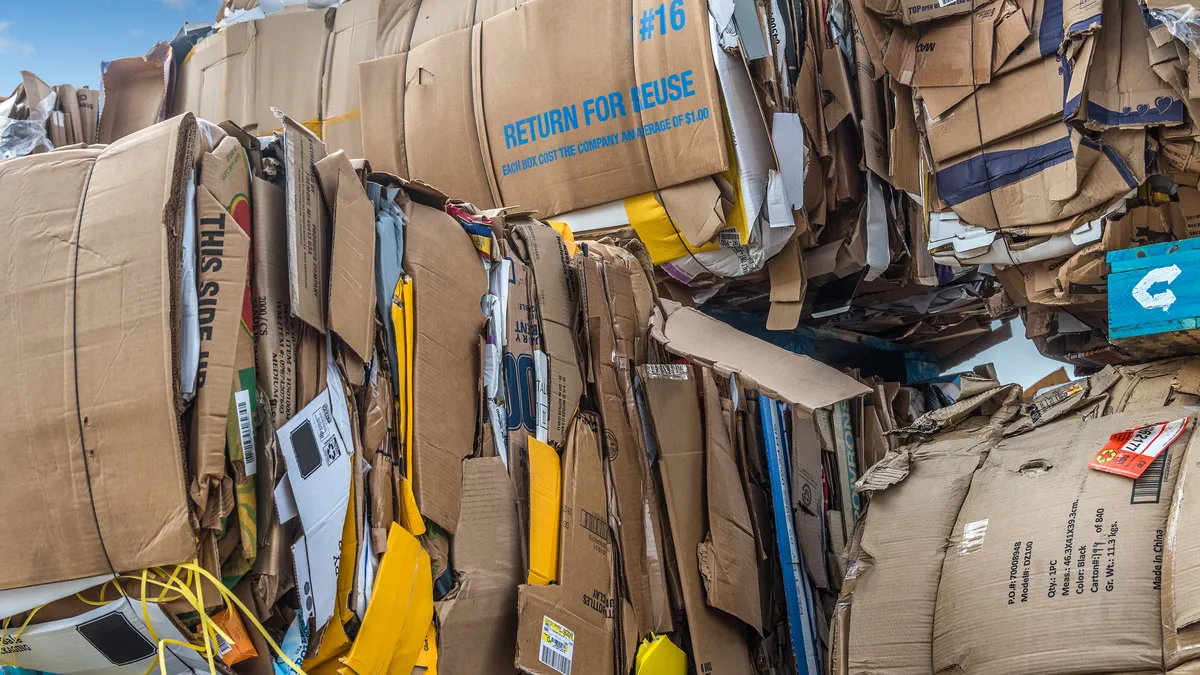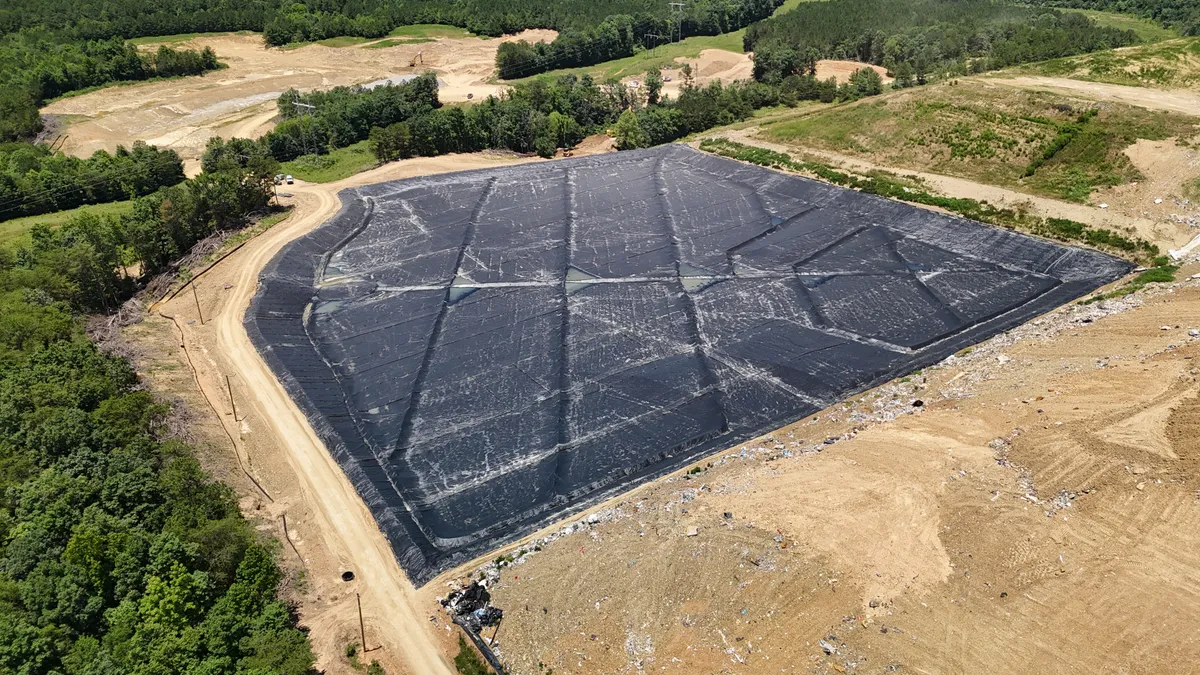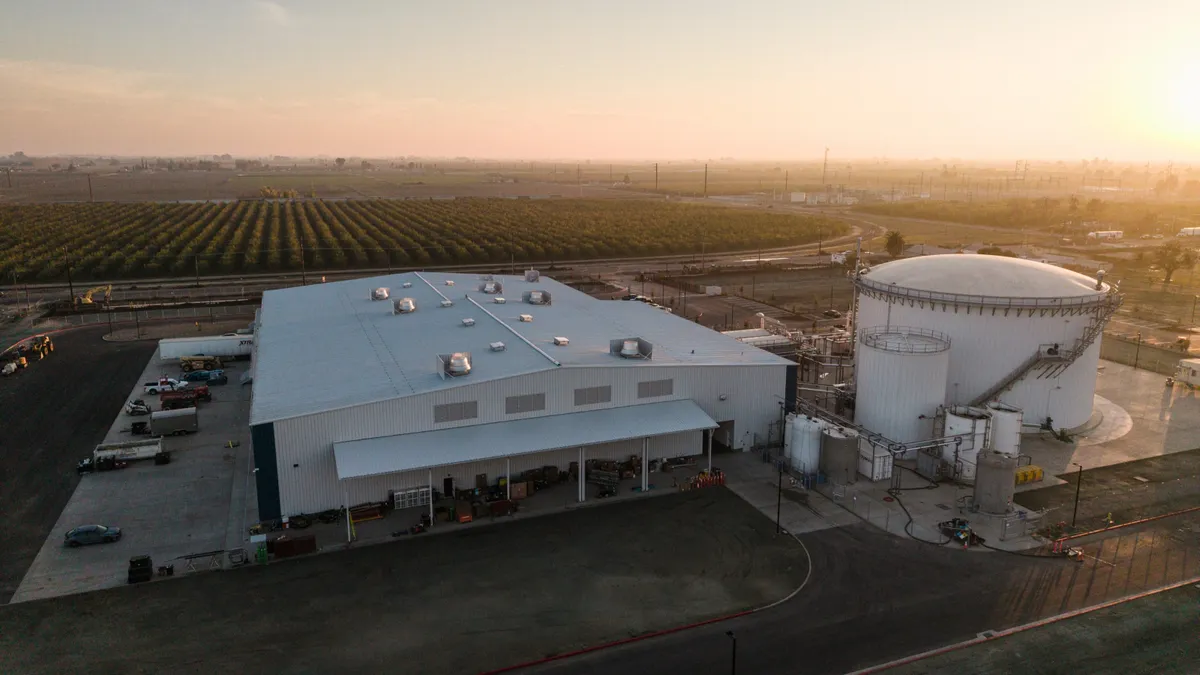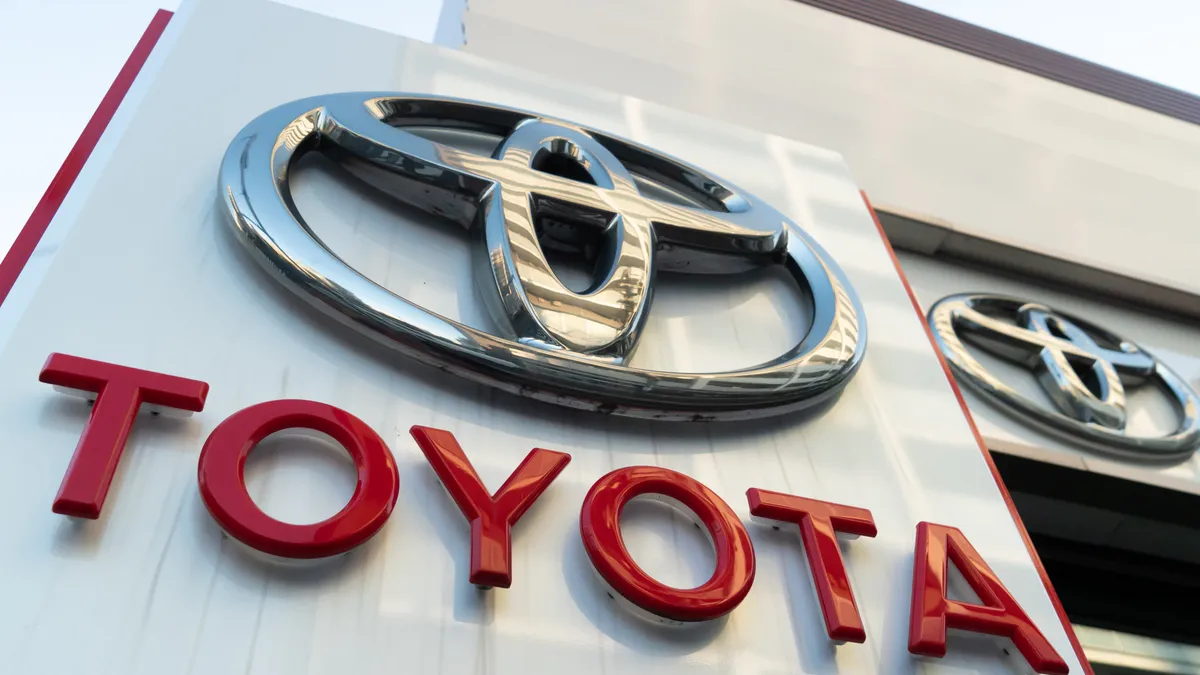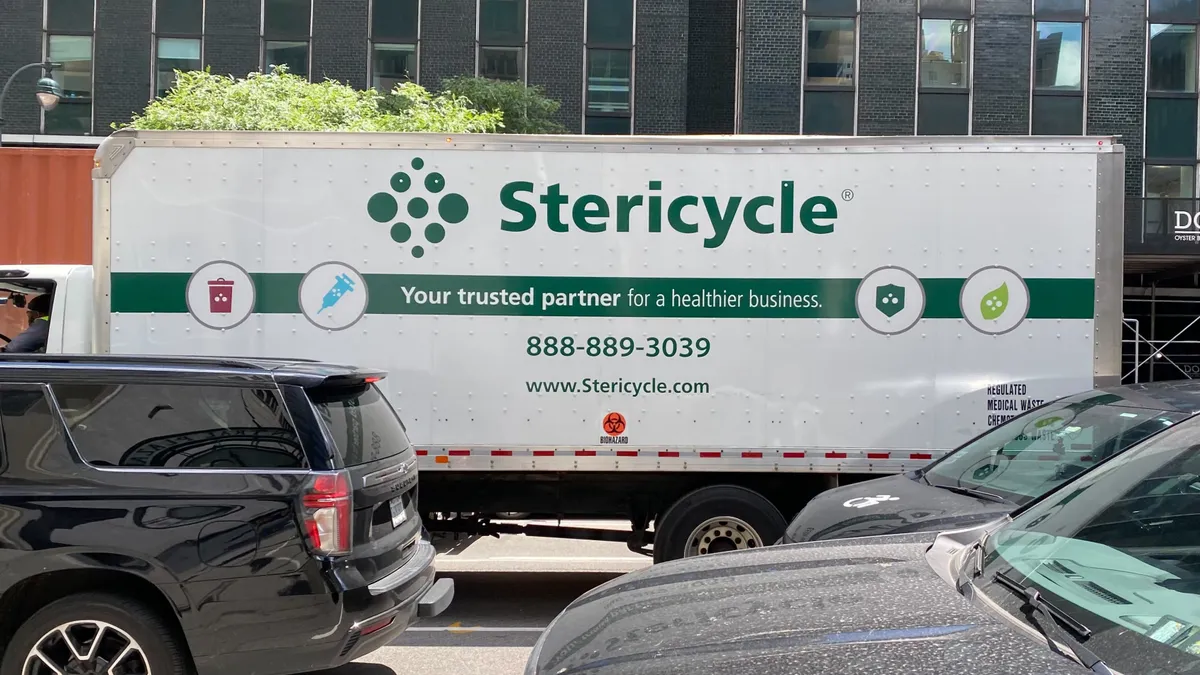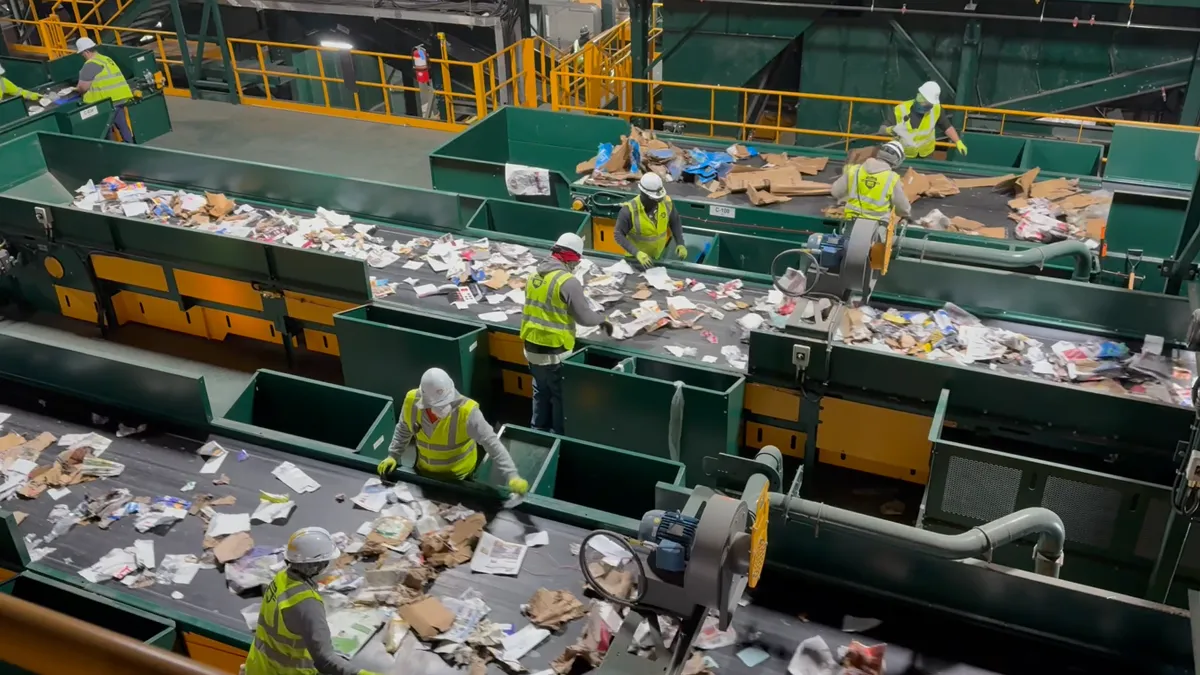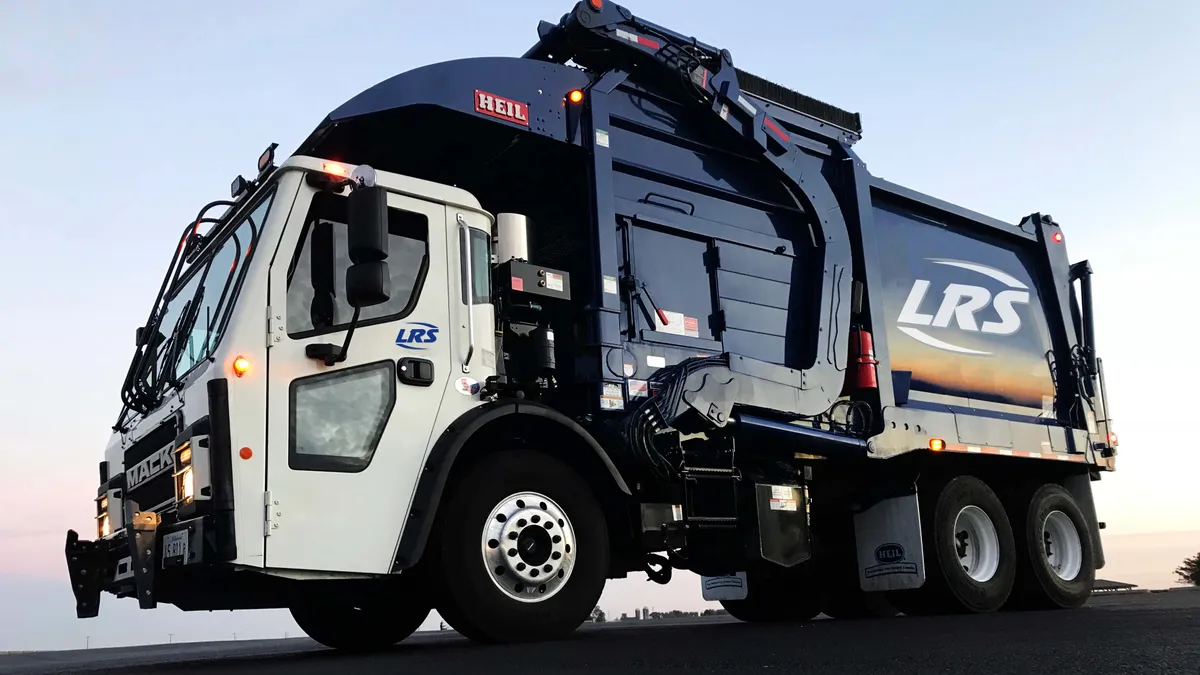This story is the first in a series on trends shaping the U.S. waste and recycling industry in 2022.
In an increasingly unpredictable world and an ever-changing industry, it can be hard to guess what’s coming next. Instead, Waste Dive’s editors are continuing the annual tradition of sharing the questions that are on our minds heading into a new year.
From M&A to recycling policy to workforce issues and much more, we’ll be tracking many themes throughout 2022. We invite you to share your thoughts on these questions, or questions of your own, via email at waste.dive.editors@industrydive.com. Please also join us for a live, virtual event on Feb. 10 to engage with the Waste Dive team directly about how we’re approaching 2022 coverage and to hear from top recycling experts.
Can anything affect the outsized amount of M&A and private equity investment in 2022?
Acquisitions are a fact of life for the modern U.S. waste industry, dating back to the high-flying wave of agglomeration its first public companies led in the 1970s and continuing over multiple cycles since. Most recently, the Trump administration’s tax cuts and speculation that Democrats could make tax changes of their own are among the factors that may be fueling a new wave of activity. The pandemic has played its own role by exacerbating the evergreen issues smaller operators face around labor, capital requirements, succession planning and overall fatigue from the stress of running a business.
Yet all waves must crest sometime. Could 2022 mark that shift, or will it go down as just another year in a string of big deals? The U.S. Department of Justice showed greater scrutiny of recent large transactions by Waste Management and Republic Services, but analysts believe large players still have plenty of room to maneuver. Financial factors could change, such as rising interest rates, but that may not be enough to dampen activity either.
Private equity-backed investments in waste and recycling companies are also increasingly common, sparking bidding battles and building up companies to become acquisition targets or candidates for initial public offerings. ESG-driven transactions are similarly gaining attention, leading to intriguing bets on companies or market areas that previously had less interest.
Fourth-quarter results are still pending, but estimates indicate public companies may have spent as much $3.46 billion on acquisitions last year. Whether or not that turns out to be the peak of this M&A roller coaster, 2022 is likely to be an interesting ride.
The pandemic has exacerbated an already-tight labor market and given workers new leverage. How will waste employers convince more people to join and remain in the industry?
Waste and recycling has long been a tough industry in which to hire and retain workers, who face hard, dirty and sometimes dangerous conditions. Industry employers say they can only take full advantage of growth opportunities as fast as they can fill jobs.
Finding enough CDL drivers and helpers to keep collection going has been a persistent challenge, especially as the booming e-commerce sector attracts more of those skilled individuals. Today, the industry’s pitch is further complicated in an economy in which workers of all types are quitting and changing jobs at record rates as they seek better pay, benefits, conditions and flexibility in the "Great Resignation." With inflation rising, so too must wages increase, as companies have acknowledged. The recent shifts in the labor market will require further adaptations to what one union representative described as a “wage, benefits and respect shortage.”
In addition to offering pay increases or signing or retention bonuses, some of the industry’s largest employers are trying to attract workers with novel benefits including education and training programs.
While companies are looking at automation to address high turnover in unattractive roles, this year’s labor challenges (already worsened by the omicron variant) could prompt the industry to increase its recruitment among underrepresented groups, such as women or formerly incarcerated individuals. Many companies have made diversity, equity and inclusion pledges in the past few years, but critics call for more transparent updates on their progress and long-term implementation efforts. Time will tell how these efforts actually affect the makeup of the industry's workforce, especially in senior leadership positions.
Will the momentum around state recycling policy continue to grow, and possibly influence federal discussions?
2021 brought significant new state waste and recycling laws such as a rare update to Connecticut’s bottle bill and the country’s first extended producer responsibility (EPR) for packaging laws, in Maine and Oregon. Numerous other bills aimed at reducing reliance on virgin plastic, increasing postconsumer plastic content in packaging and banning single-use plastics also passed.
When one state passes such a bill, other legislators take detailed notes. This year, Colorado is expected to introduce EPR legislation after more than a year of studying other state programs, and numerous other states plan to introduce or reintroduce EPR bills. Advocacy group Beyond Plastics has created a draft model EPR bill meant to help with the process. Meanwhile, Massachusetts, Vermont, New Hampshire and others are working to update or introduce bottle bill laws, and advocates also plan to introduce a federal bottle bill similar to the one outlined in the Break Free From Plastic Pollution Act.
Single-use plastics will remain a target for state legislation, too. Washington, Virginia and Colorado were among the states last year to ban certain single-use plastics, and advocacy groups like Environment America have said they plan to support additional bills in 2022 to do so in Connecticut, Texas, Illinois and other states. Bills targeting PFAS in packaging are expected to pop up in several states, including Rhode Island.
Meanwhile, a working group of state recycling officials in the Northeastern U.S. is drafting model legislation for minimum postconsumer recycled plastic content standards in items such as trash bags and beverage containers, using laws in Oregon, California and New Jersey as examples.
Labeling is another hot topic advocates expect to tackle in 2022, after California passed a law that no longer allows manufacturers to deem packaging recyclable unless it goes through the state’s detailed approval process. Advocates are pushing for a federal version of that bill too.
How will the Biden administration’s efforts on climate change influence the national waste and recycling discussion?
President Joe Biden has repeatedly said addressing climate change is a priority for his administration, but we don’t yet have the full picture of how this might affect day-to-day operations in landfills, recycling facilities and other industry sectors.
The U.S. EPA is expected to offer more details on its circular economy goals, most notably how it plans to approach source reduction – a waste management approach many critics felt was erroneously left out of its National Recycling Strategy. Further reports and data on federal reuse strategies, plastics, food waste and more, plus a recycling measurement guide, are in the works.
The Federal Trade Commission is also expected to review its guide on environmental marketing claims, known as the “Green Guides,” in 2022. The updated report could shed light on the ongoing debate over what materials should be deemed recyclable. This information will be valuable to recyclers, as well as for lawmakers at the state and federal levels who have expressed interest in “truth in labeling” laws, that would dictate whether a product’s recyclability claim is accurate.
The administration has also supported additional funding for recycling infrastructure and other needs. About $350 million in recycling-related funding from the Infrastructure Investment and Jobs Act is expected to start becoming available by the end of the year, but further funding some hoped to get in the Build Back Better bill isn’t looking promising due to a stalemate in the Senate. Meanwhile, Congress is slowly moving numerous waste and recycling bills forward, which may offer more opportunities for funding if any of them reach the finish line.
How will environmental justice conversations and actions continue to evolve, especially around PFAS and landfill emissions? Are the stakes getting higher?
Recycling and waste operations will need to make environmental justice considerations a priority in 2022 and beyond, especially as lawmaking and advocacy on the topic move forward at the grassroots, state and federal level, according to fenceline community advocates and EPA officials.
Experts have repeatedly said that facility operators must not wait for direction from new regulations to build community relationships. In one of the latest examples, public input is now a required part of the permitting process in New Jersey and some expect that requirement to become commonplace in other states.
Concerns over PFAS-containing items in landfills are a notable part of the EJ conversation, including how PFAS could show up in leachate runoff or emissions from combustion facilities. The EPA has not given a definitive answer on preferred PFAS destruction or disposal methods, but it anticipates releasing more research data in 2022 that could help give disposal facility operators and others a better sense of how they must move forward. However, the agency likely won’t update its guidance until later in 2023. This spring, the EPA plans to seek public comment on its proposed rulemaking to designate PFOA and PFOS hazardous substances, and it may do the same for certain other PFAS.
Activists have also targeted chemical recycling facilities for further environmental justice action through federal legislation, with the aim of temporarily halting permits for new plastics facilities in order to study the environmental impacts on fenceline communities.
The climate case for keeping organics out of disposal sites is clear. Will collection and processing infrastructure scale up to meet the moment?
As the climate crisis comes into increasing focus, landfill emissions are in the crosshairs. Investment in biogas projects at these sites saw a notable uptick last year, as such systems can play a key role in addressing greenhouse gas (GHG) emissions from waste and financial returns are increasingly favorable. Some of the greatest financial and environmental benefits in this area can come from reducing waste generation or facilitating the recovery of edible food — as a recently revised methodology for the EPA’s 2030 food waste goal noted — but some level of collection is still viewed as necessary. So far, the U.S. has yet to substantially scale up its organics collection and processing infrastructure.
To date, drivers for collecting and processing more food waste have come from state and local governments or private-sector ESG initiatives. 2022 is bringing another round of new or expanded policies in states including California, Connecticut, Massachusetts and New York. California’s SB 1383 policy may prove to be the largest test yet for organics collection in the U.S., as jurisdictions and haulers throughout the state work to reverse long-standing landfill disposal trends.
While many of the industry’s largest companies offer solutions in these markets, organics barely get a mention in their financial reports. Multiple large private companies in markets without such government policies still have limited or no organics operations. Meanwhile, anaerobic digestion companies are growing and investing in projects around the country; composters are on the rise (including a proliferation of small-scale operators) and local governments are trying to get creative with their own solutions.
It will be telling to see where organics recycling fits into the waste industry’s business discussions. Will companies remain agnostic about organics going to landfills with gas-capture systems, or can 2022 offer new lessons about how to scale up this form of recycling in an effective and profitable way?
How will cities innovate while they’re straining to keep basic services going?
As more cities pursue ambitious GHG emissions-reduction targets, they can serve as important proving grounds for cleaner technologies and waste-diversion programs. In the past two years, pandemic costs and the more immediate challenges of providing consistent collection services have no doubt impeded innovation. But 2022 could see pent up ideas come to light: Fresh municipal leadership, new policies, shifting contracts and an influx of flexible federal funds could all be sources of change.
New mayors in major cities such as New York and Boston have expressed support for expanding access to organics recycling. And Seattle intends to update its solid waste plan this year to reflect goals of “producing and using less.” More broadly, numerous cities, including Nashville, are considering pay-as-you-throw models. Some cities also have ongoing incubators or grant programs promoting circular solutions.
Municipalities will also continue to leverage American Rescue Plan funds. Although sector stakeholders are competing with an array of eligible interests, cities have the potential to use the money for everything from waste and recycling infrastructure improvements to projects at landfills to electrifying fleets.
How will reduction and reuse fit into evolving business or government goals?
The EPA and others have long talked about "reduce" and "reuse" as top of the recycling hierarchy, yet those two approaches are often overshadowed. The National Recycling Strategy puts renewed focus on the issue, stating a clear goal “to build a circular economy for all," and the agency indicated it will issue new guidance on source reduction and materials reuse.
Numerous major cities are behind on reaching their stated zero-waste targets, and manufacturers and other companies across industries continue to pursue goals of their own. Big banks and investment funds are increasingly eager to show engagement on the ESG trend, creating new funding opportunities for climate-tech startups, including those focused on systems or products for waste reduction and reuse.
One of the main catalysts for reuse businesses in 2022 could be state EPR legislation focused on packaging. Packaging manufacturers and buyers alike acknowledge their increasing awareness and interest in moving to more circular systems, but they note that the profit incentive won’t be there until EPR laws kick in and reuse options become more cost-effective than their disposable counterparts.
So too are there potential cost-saving incentives for embracing reduction, whether from grocers reducing food waste or via right-to-repair laws that could benefit consumers. While some in the reuse space seek to partner with traditional haulers, it remains to be seen how well a greater shift to lowering consumption and reducing waste at the source will work with the industry’s existing model.


